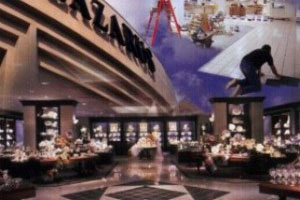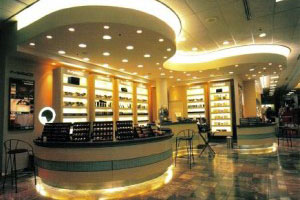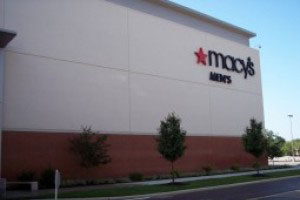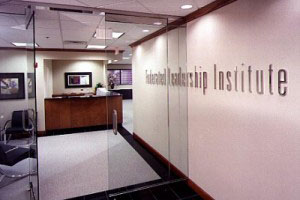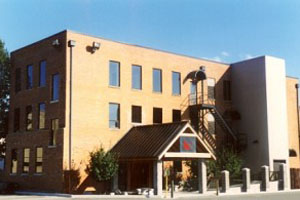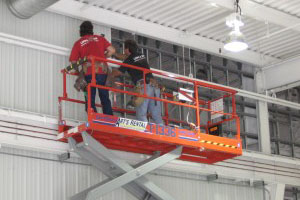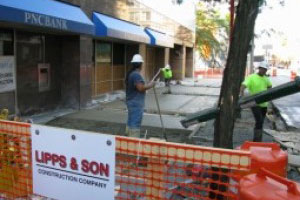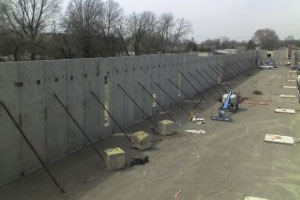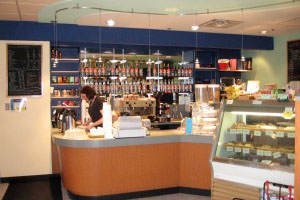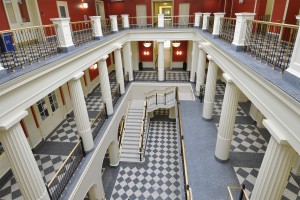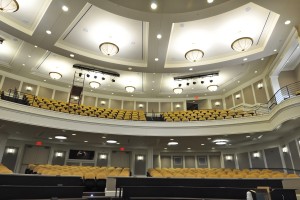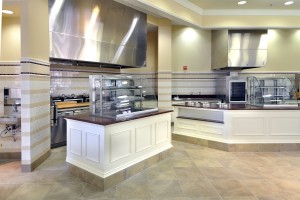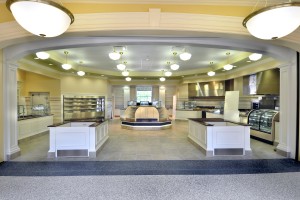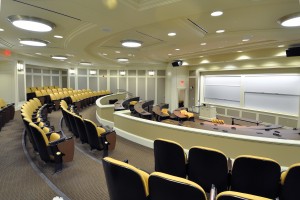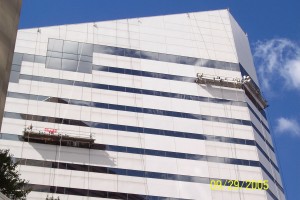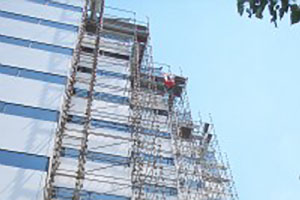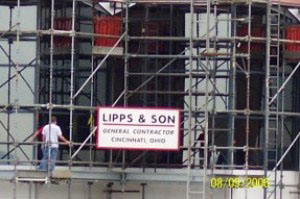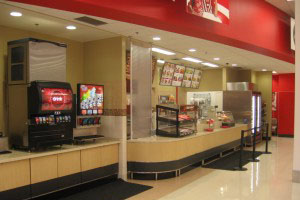Select a category below for more information.
Retail
Lipps & Son has over a quarter century experience working in retail environments, including everything from renovations to new construction. Project sizes vary from 500 square foot boutiques to 50,000+ square foot department stores. We are experienced working in occupied spaces and understand the clients need to complete the project as quickly as possible.
Lipps & Son is considered a “first choice” general contractor for national retailer, Macy’s Department Stores. We have had the privilege of working for / with Macy’s for the past quarter century.
Lipps & Son is considered a “first choice” general contractor for national retailer, Macy’s Department Stores. We have had the privilege of working for / with Macy’s for the past quarter century.
Commercial
Our commercial experience includes decades of constructing corporate offices, learning centers, healthcare facilities, entertainment facilities, community centers, financial centers, video studios, and numerous other facilities.
Our negotiated contract is available to (select) clients and considered the best value in the construction industry.
Our negotiated contract is available to (select) clients and considered the best value in the construction industry.
Light Industrial
Our light industrial experience includes manufacturing facilities (renovations and new construction), structural related improvements and more.
Our negotiated contract is available to (select) clients and considered the best value in the construction industry.
Our negotiated contract is available to (select) clients and considered the best value in the construction industry.
Restaurants
We believe Lipps & Son is uniquely qualified to assist in the renovation of your restaurant or food service business, based on our long history of completing fast paced projects (on time and on budget) while still providing quality craftsmanship at very competitive prices.
Our negotiated contract is available to (select) clients and considered the best value in the construction industry.
Our negotiated contract is available to (select) clients and considered the best value in the construction industry.
Schools & Universities
A recent project (Summer 2009) includes the 30,000 square foot construction of the Richard T. Farmer School of Business at Miami University (Oxford, Ohio). On this project, Lipps & Son installed all the trim, casework and fixtures throughout the complex. The project lasted three months and employed as many as sixty skilled craftsmen.
Our negotiated contract is available to (select) clients and considered the best value in the construction industry.
Our negotiated contract is available to (select) clients and considered the best value in the construction industry.
Historic Preservation
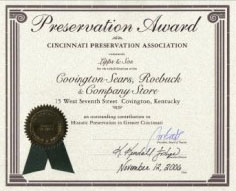
Preserving historic buildings is essential to understanding our nation's heritage. In addition, it is an environmentally responsible practice. By reusing existing buildings, historic preservation is essentially a recycling program of 'historic' proportions. Existing buildings can often be energy efficient through their use of good ventilation, durable materials, and spatial relationships. An immediate advantage of older buildings is that a building already exists; therefore energy is not necessary to create new building materials and the infrastructure is already in place. Minor modifications can be made to adapt existing buildings to compatible new uses. Systems can be upgraded to meet modern building requirements and codes. This not only makes good economic sense, but preserves our legacy and is an inherently sustainable practice.
The “Four Treatment Approaches” to historic properties are: preservation, rehabilitation, restoration, and reconstruction.
Preservation focuses on the maintenance stabilization, and repair of existing historic materials and retention of a property's form as it has evolved over time.
Rehabilitation acknowledges the need to alter or add to a historic property to meet continuing or changing uses while retaining the property's historic character.
Restoration depicts a property at a particular period of time in its history, while removing evidence of other periods.
Reconstruction re-creates vanished or non-surviving portions of a property for interpretive purposes.
Of concern to preservation and design professionals is the cumulative effect of seemingly minor changes over time, which can greatly diminish the integrity of a historic building. Major preservation design goals include:
Update Building Systems Appropriately—Updating building systems in historic structures requires striking a balance between retaining original building features and accommodating new technologies and equipment. Building system updates require creativity to respect the original design and materials while meeting applicable codes and tenant needs.
Accommodate Life Safety and Security Needs—The accommodation of new functions, changes in technology, and improved standards of protection provide challenges to the reuse of historic buildings and sites. Designers must address life safety, seismic, and security issues in innovative ways that preserve historic sites, spaces and features.
Comply with Accessibility Requirements—Accessibility and historic preservation strategies sometimes conflict with each other. Designers must provide access for persons with disabilities while meeting preservation goals.
Facilities Management
Lipps & Son has been the on-site facilities vendor for the Macy’s corporate headquarters in downtown Cincinnati, Ohio since 1983.
During this period, we have provided daily maintenance, personnel to relocate office furniture and supplies, replacement of roof systems, renovations to elevators, installation of structural supports (for window cleaning), parking garage repairs and improvements, replacement of windows, removal and replacement of their entire sidewalks on both Seventh and Vine Streets to painting of the exterior of the twenty-one story building.
Our long-term agreement allows us to offer Macy’s the most competitive rates possible.
Our negotiated contract is available to (select) clients and considered the best value in the construction industry.
During this period, we have provided daily maintenance, personnel to relocate office furniture and supplies, replacement of roof systems, renovations to elevators, installation of structural supports (for window cleaning), parking garage repairs and improvements, replacement of windows, removal and replacement of their entire sidewalks on both Seventh and Vine Streets to painting of the exterior of the twenty-one story building.
Our long-term agreement allows us to offer Macy’s the most competitive rates possible.
Our negotiated contract is available to (select) clients and considered the best value in the construction industry.
Store Fixture Installation
Lipps & Son has decades of experience installing millwork and store fixtures.
We believe the installation process is equally important as the quality of the millwork and store fixtures provided. An inexperienced or unqualified installation team can greatly reduce the quality of the finished product.
Beginning late 2009, Lipps & Son is now offering nationwide installations of millwork and store fixtures to (select) clients.
We believe the installation process is equally important as the quality of the millwork and store fixtures provided. An inexperienced or unqualified installation team can greatly reduce the quality of the finished product.
Beginning late 2009, Lipps & Son is now offering nationwide installations of millwork and store fixtures to (select) clients.
ADA Compliance

In 1992, Congress passed the Americans with Disabilities Act (A.D.A.). The law requires that all businesses must provide equal access and accommodations for those with disabilities. Recognized disabilities include impaired mobility, sight and hearing.
The federal government allowed a ten year period for businesses to comply. During this ten year grace period, many businesses conducted ADA site surveys and corrected their deficiencies. Others did not. During this same period, there were no enforcement agencies at the federal, state or local levels.
After the ten year grace period (ending in 2002), numerous lawsuits ensued. Most were legitimate complaints while many others were targeted at select businesses that were known to be non-compliant. Attorneys would then file suit and the vast majority of these cases were settled out of court. Typical ADA out of court, lawsuit settlements average $4,000 for non-compliant door knobs, $6,000 for sales counters that are not at the appropriate height and up to $15,000 for incorrect parking lot signs or stalls.
Common ADA Misconceptions
Many businesses have made the following mistakes when considering their mandated ADA compliance;
• "Our (non-compliant) restrooms are not open to the public". They have to be compliant in order to offer employment to a disabled person. If your restroom is non-compliant, you are in violation.
• "The landlord is responsible. I’m just a tenant". The Courts have ruled that the landlord and tenant are responsible for ensuring ADA compliance.
• "We're grandfathered because…". There is no “grandfather” clause in the law or pertaining to ADA compliance.
Construction Management
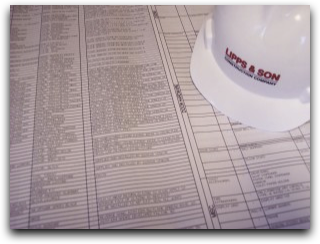
Lipps & Son has been providing construction management services continually during our twenty-eight year history. We determine the size and complexity of your project and then appoint the appropriate project manager. Senior management provides the additional oversight to ensure your projects success.
According to the Construction Management Association of America, "Construction management is a professional service that applies effective management techniques to the planning, design and construction of a project from inception to completion for the purpose of controlling time, cost and quality".
Including Lipps & Son very early in your project can help save you money. We can do more to impact project costs and satisfy expectations by working with the owner, architect and designer in a collaborative approach.
Our involvement starts during the pre-construction phase where we provide valuable input on the time and cost consequences of design and construction decisions, scheduling, cost control, purchasing of critical materials and long-lead-time items and coordination of construction activities.
Design / Build
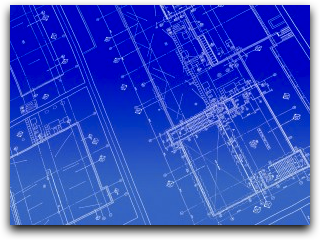
The design / build approach that include the Lipps & Son negotiated contract is the most effective way to ensure the Owner receives the finished product they want for the very best value. Contact us today to learn more about this valuable service.
Green / LEED

Safety

All field personnel are OSHA 30 certified and subject to our zero-tolerance drug testing.
At Lipps & Son, safety is a team effort.
View Our Negotiated Contract

Negotiated Contract
Lipps & Son has provided general construction services on a negotiated basis on several different types and size projects. The most recent being a $1.3 million regional office space for Macy’s in Columbus, Ohio that was completed in seven weeks. A negotiated contract enables the Contractor and Client to work closely together to select subcontractors on the basis of quality of workmanship, price and performance to time. Under this contracting method our services are provided on the basis of the actual cost of the work plus a percentage or fixed fee amount. But unlike the traditional cost-plus contract, our negotiated contract offers cost / value engineering and competitive bidding on every significant phase of work. When plans are sufficiently complete to define the scope of the project, a competitive bid is provided to the client and (upon agreement) a guaranteed maximum price (GMP) is set.
Hiring Lipps & Son on a negotiated basis provides many advantages. We can do more to impact project costs and satisfy expectations by working with the owner, architect and designer in a collaborative approach.
Preconstruction
Our involvement starts during the pre-construction phase where we provide valuable input on the time and cost consequences of design and construction decisions, scheduling, cost control, purchasing of critical materials and long-lead-time items and coordination of construction activities.
Construction
During the construction phase, our role is to proactively manage the construction process though effective planning, scheduling, and daily on-site supervision. Our role also includes project management responsibilities, monitoring quality and safety, and communication with the entire project team.
Features of a Negotiated Contract with Lipps & Son are:
As your General Contractor, Lipps & Son will exceed your expectations with the services we provide you during your building project. From your project inception to the occupancy of your building, Lipps & Son will be with you every step of the way.
Lipps & Son has earned the status of first choice / preferred contractor for Federated Department Stores / Macy’s Department Stores (references available).
Lipps & Son has provided general construction services on a negotiated basis on several different types and size projects. The most recent being a $1.3 million regional office space for Macy’s in Columbus, Ohio that was completed in seven weeks. A negotiated contract enables the Contractor and Client to work closely together to select subcontractors on the basis of quality of workmanship, price and performance to time. Under this contracting method our services are provided on the basis of the actual cost of the work plus a percentage or fixed fee amount. But unlike the traditional cost-plus contract, our negotiated contract offers cost / value engineering and competitive bidding on every significant phase of work. When plans are sufficiently complete to define the scope of the project, a competitive bid is provided to the client and (upon agreement) a guaranteed maximum price (GMP) is set.
Hiring Lipps & Son on a negotiated basis provides many advantages. We can do more to impact project costs and satisfy expectations by working with the owner, architect and designer in a collaborative approach.
Preconstruction
Our involvement starts during the pre-construction phase where we provide valuable input on the time and cost consequences of design and construction decisions, scheduling, cost control, purchasing of critical materials and long-lead-time items and coordination of construction activities.
Construction
During the construction phase, our role is to proactively manage the construction process though effective planning, scheduling, and daily on-site supervision. Our role also includes project management responsibilities, monitoring quality and safety, and communication with the entire project team.
Features of a Negotiated Contract with Lipps & Son are:
- Competitive Bids from qualified subcontractors for every significant phase of work, ensuring the Client receives the best value.
- Contractor’s involvement starts during pre-construction stage so constructability, cost and schedule can be addressed during design.
- Open book approach. All pricing and costs are available for scrutiny.
As your General Contractor, Lipps & Son will exceed your expectations with the services we provide you during your building project. From your project inception to the occupancy of your building, Lipps & Son will be with you every step of the way.
Lipps & Son has earned the status of first choice / preferred contractor for Federated Department Stores / Macy’s Department Stores (references available).

